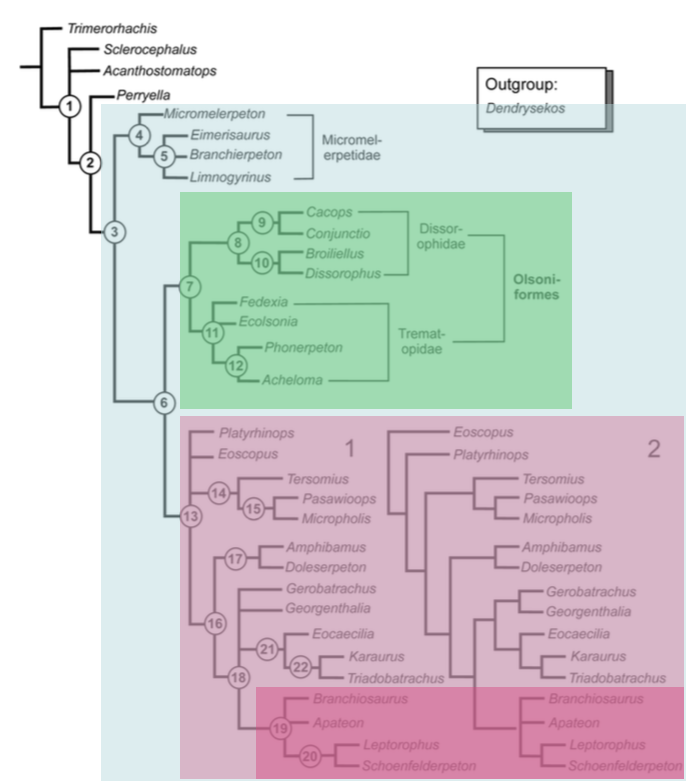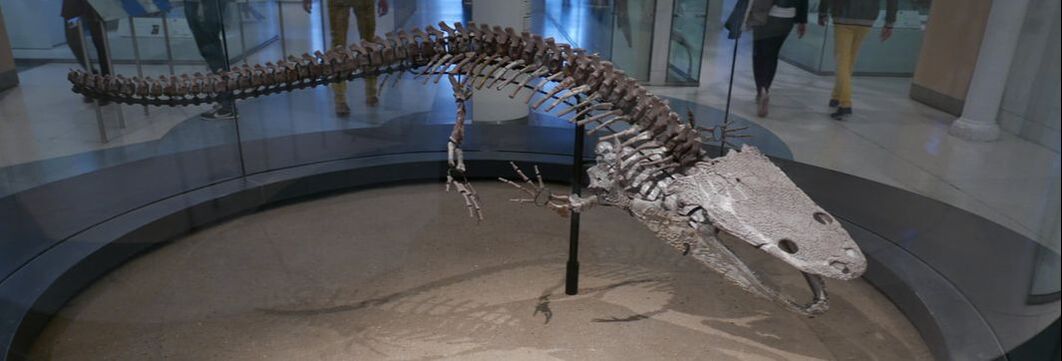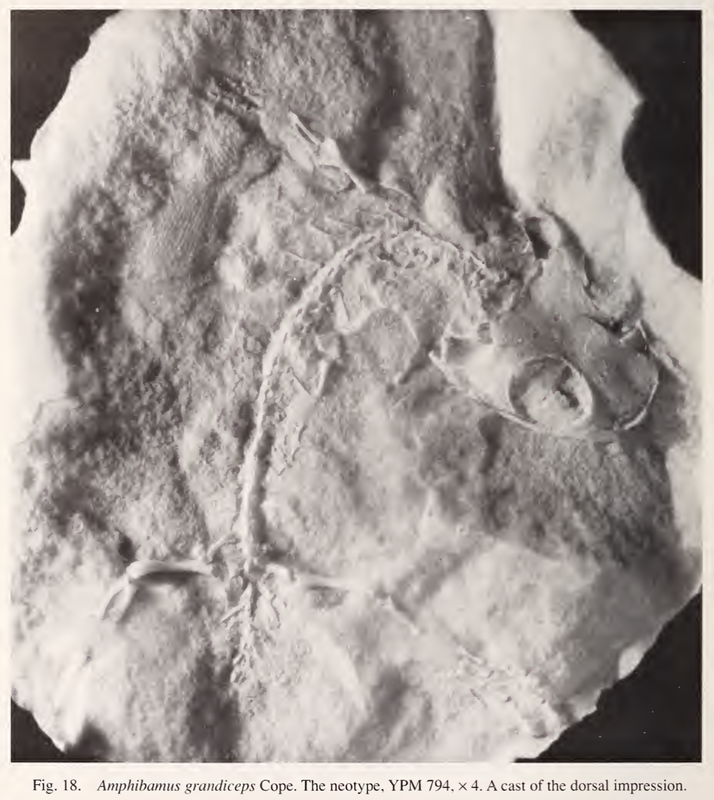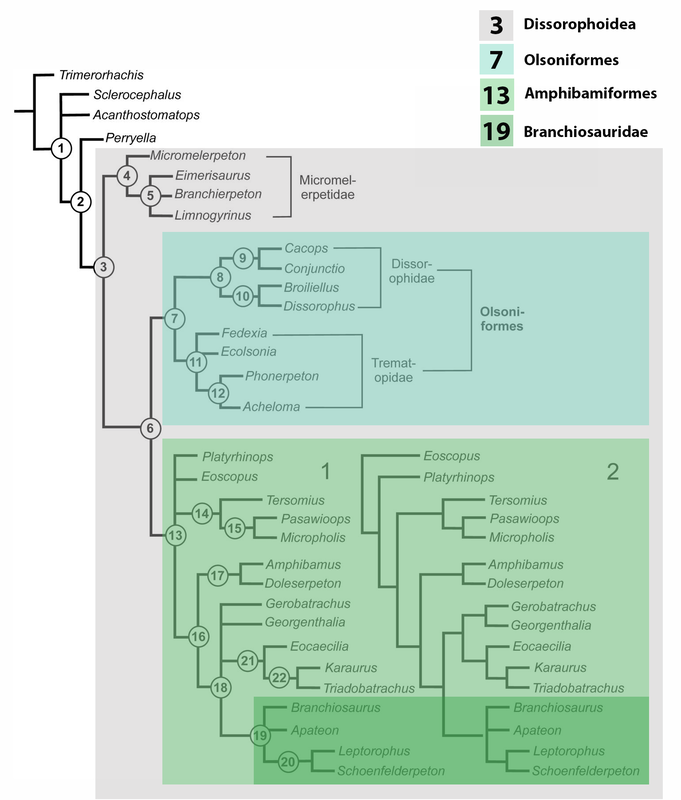So this week, I want to highlight a few of the amphibamiforms that are not always included in phylogenetic analyses, in part because some of them have clear destabilizing effects on the phylogenetic analysis. There are at least 16 recognized non-branchiosaurid amphibamiforms (so the classic 'amphibamids'), but I would say that only half of those are always included in dissorophoid / amphibamiform analyses, such as Amphibamus. But if you think about it, not including some taxa doesn't mean they don't exist, and it's important to be mindful that excluding taxa can skew the picture, whether intended to or not. As always, good to be constructively critical of methodologies and to think about how they can bias results!
Frequent museum-goers are probably aware that most of those mounted skeletons that you see at museums aren't one individual - they're composites (like the metoposaurid above at the American Museum), sometimes of multiple individuals found together and sometimes of multiple individuals found apart. The fossil record isn't kind to most skeletons, and 99.99999% (more or less) of all fossils are just isolated bits. The good news is you can often cobble together the many bits to make a collection of bits, which maybe looks more like a skeleton, but the bits need to fit. Think about it like fashion (this is not my expertise, don't crucify me): you can usually make many different combinations of clothes that work, but they need to fit - you probably don't pair winter coats with speedos (though this would be done in California if anywhere). Not only that, but you probably can't (or wouldn't) use clothes from when you were a teenager as an adult. Of course, maybe your teenage fashion sense was super cringy, and that's why you won't do it, but one of the other reasons might be that your clothes (even your favourite hoodie from that concert in 11th grade) from back then don't fit. It's the same idea when making a composite fossil - the bits all have to fit, and that means they have to come from individuals that were about the same size.
We begin the amphibamiform showcase with the eponymous Amphibamus, one of the oldest known dissorophoids (both in terms of temporal occurrence and history of study)! A brief history of study
Having finally made it to Seattle and gotten some semblance of stability, I'm cautiously optimistic that I can reboot the blog on a more regular note again! As regular readers may notice, I'm a big fan of alliteration, so having missed the entirety of Metoposaurid May, which I did last year, August will be Amphibamiform August! This week will provide a general overview of amphibamiforms. Amphibami– what now?
|
About the blogA blog on all things temnospondyl written by someone who spends too much time thinking about them. Covers all aspects of temnospondyl paleobiology and ongoing research (not just mine). Categories
All
Archives
January 2024
|




 RSS Feed
RSS Feed
